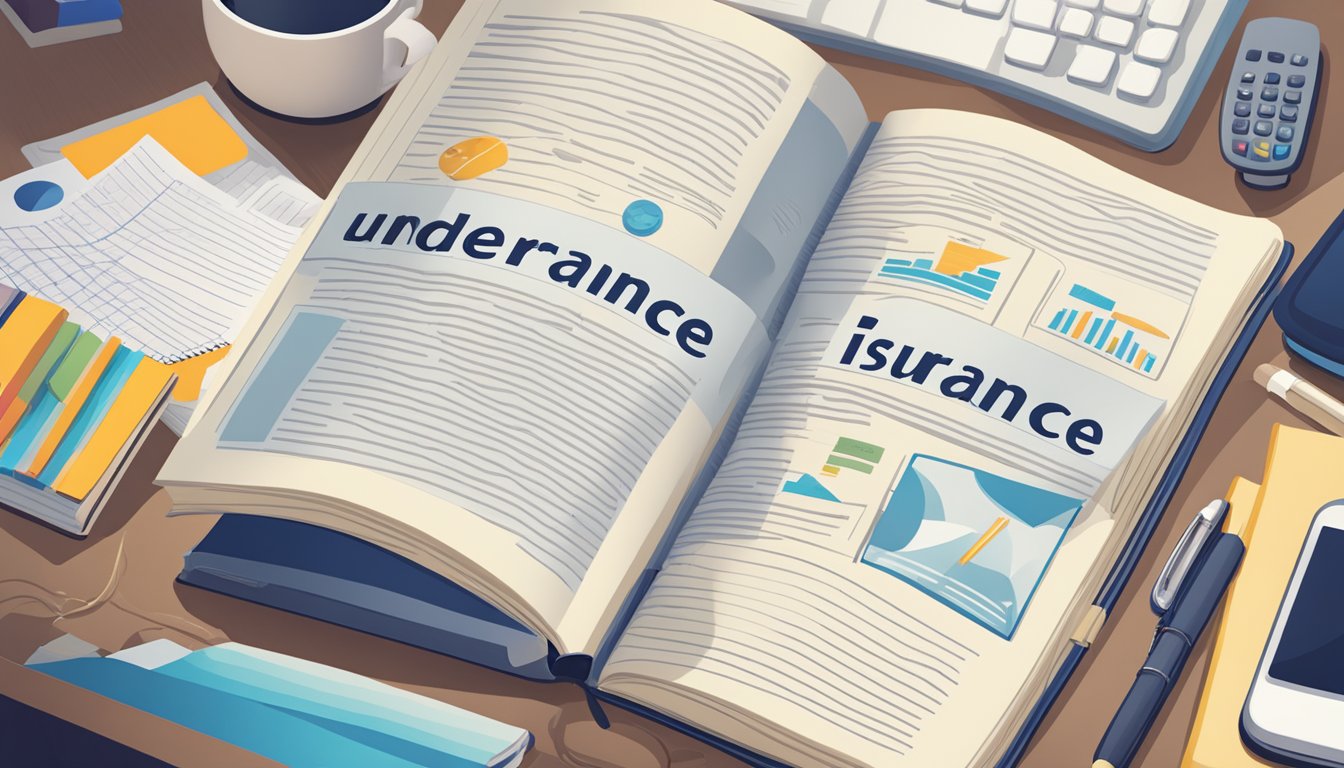Understanding Insurance Terms

Insurance is a system where an individual or entity receives financial protection against losses from an insurance company.
A policy is the contract that outlines the terms of this protection.
The policyholder pays premiums, a regular payment to maintain coverage.
Primary insurance is the first level of coverage that handles the initial claims.
If your primary insurance reaches its limit, secondary insurance can help cover additional costs.
Coverage defines the extent of protection provided by the insurance policy. Comprehensive coverage offers wider protection compared to basic plans. Deductibles are amounts you pay before your insurance kicks in.
The claims process is how you request compensation after a loss.
A claim involves filling out forms and providing evidence of the loss. Benefits refer to the money or services provided under the policy.
Coordination of benefits ensures that primary and secondary plans work together without overlapping compensation.
The insurance company assesses risk to set premiums and determine eligibility.
Nonrenewal occurs when an insurance company decides not to renew your policy. Salvage value is the estimated value of an asset after partial damage.
Learn more about these concepts from this definition.
Understanding these terms helps you make informed decisions about your insurance needs and ensures you get the most from your insurance coverage.
It is crucial to know your policy’s details and the process for making a claim.
This knowledge gives you the financial protection you need.
Insurance in Health Care

Navigating health insurance can be complex, with many terms and rules to understand.
This section breaks down important aspects, including primary vs. secondary insurance, Medicare and Medicaid, and employee benefits.
Primary Vs. Secondary Insurance
When you have more than one health insurance plan, your primary insurance coverage pays first.
This means your primary plan covers most of your medical expenses up to its limits.
The secondary insurance coverage then covers remaining costs, such as copayments and coinsurance.
The difference between primary and secondary insurance is significant.
The primary plan is usually through your employer, while the secondary could be from a spouse or another source.
Understanding coordination of benefits rules helps you know which insurance pays first.
Medicare and Medicaid
Medicare and Medicaid are essential for many individuals, especially the elderly, low-income families, and people with disabilities.
Medicare is a federal program that provides health coverage if you are 65 or older or have severe health conditions.
Medicaid, on the other hand, offers health insurance to low-income individuals and families.
If you have other health insurance and are also a Medicare member, Medicare can either be your primary or secondary insurance.
For example, Veterans Administration and Tricare can impact the way benefits are paid.
Knowing how Medicare works with other insurance ensures you maximize your benefits.
Understanding Employee Benefits
Employee benefits often include health insurance, which can significantly reduce your medical expenses.
Employer-based plans are usually primary insurance if you have two health plans.
They cover the bulk of your health care costs, making sure you have access to necessary services.
Many employer-based plans come with additional benefits like exclusive provider organizations which give you access to a network of doctors and hospitals.
Coordination of benefits is key here, especially if you have a secondary plan.
Understanding the birthday rule can also help in determining which plan pays first.
By being aware of these different aspects, you can better navigate your health insurance plans and ensure you get the best possible coverage for your needs.
Insurance for Businesses and Property

Protecting your business involves having the right insurance policies tailored to your needs.
This includes covering employee injuries, property damage, and potential legal claims.
Worker’s Compensation and Liability
Worker’s compensation is crucial for businesses.
This insurance covers medical expenses and lost wages for injured workers.
It’s a mandatory requirement in many states and shields your business from lawsuits related to workplace injuries.
General liability insurance safeguards against claims of bodily injury or property damage caused by your business operations.
It is essential for handling legal fees, medical costs, and any settlements or judgments made against you.
This makes it a primary defense against various financial losses.
Property and Excess Insurance
Business property insurance protects your company’s physical assets, such as buildings, equipment, and inventory.
It offers coverage against risks like fire, theft, and natural disasters.
Understanding the replacement cost of your property ensures you are adequately covered without suffering huge out-of-pocket losses.
Excess insurance or umbrella policies supplement primary insurance by providing additional coverage beyond the policy limits of the underlying policy.
This can include higher limits for liability claims, which is vital for businesses with high-risk exposure or significant asset values.
Having multiple layers of insurance ensures your business is protected even in severe scenarios.
Risk and Insurance in Business
Risk management is an integral part of maintaining a successful business.
Identifying and understanding potential risks allows you to choose the right insurance policies.
For example, businesses in earthquake-prone areas may need earthquake insurance, while those near water bodies might require flood insurance.
Coordination of benefits ensures that all your insurance policies work together without conflict.
This helps prevent gaps in coverage and reduces the chances of disputes with your insurer during the claims process.
Proper risk management and insurance planning are essential to mitigate financial losses, handle liabilities, and secure your business’s future.






